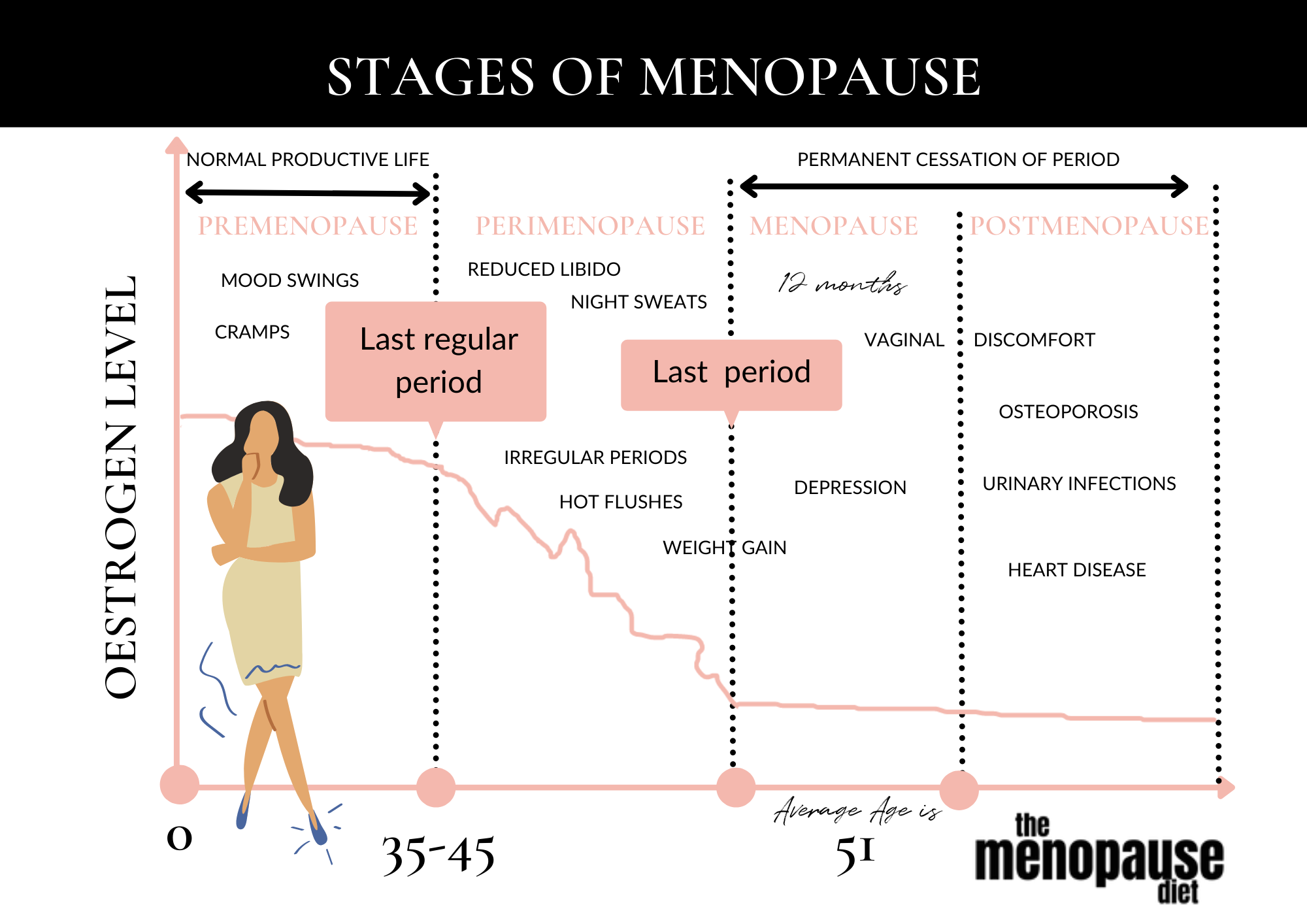Menopause is something all women know about and expect to happen at some point in their lives, but no one really explains what is happening and why we suddenly experience all of these menopausal symptoms.
Today, I want to share some facts about menopause and help you understand what might be happening in your body.
First up, let’s start with a common misconception. Many women think that menopause lasts for years. The truth is, ‘official’ menopause is diagnosed when you have gone 12 months without a period.
Menopausal symptoms and perimenopause can last for years but ‘official’ menopause is just a small window of the true menopausal experience.
Perimenopause is the time prior to ‘official’ menopause and the time most ladies really struggle.
Many women do not realise they are perimenopausal, as many of the symptoms in isolation might not be associated with menopause.
Some women might start feeling a bit flat, more forgetful, and just not quite like themselves.
The reality is that there isn’t one defining moment that lets you know you are perimenopausal.
So many women suffer in silence for years. They are often unsure of what to do, however the reality is that there are options out there.
First up, let me help you understand what might be happening to your body.
Perimenopause can begin up to 10 years before official menopause. Most women are in their mid-40’s, however it can start earlier.

Why does perimenopause start?
As you age, your ovaries produce less oestrogen as your body prepares to stop releasing eggs. Your child bearing years come to an end.
Most of the hormonal changes you will experience are due to declining oestrogen levels.
Once you enter perimenopause, your oestrogen levels start to decrease. It’s this decrease in oestrogen and the balance between oestrogen and progesterone that are responsible for the rollercoaster experience known as menopause.
Over time, your body will produce less and less oestrogen until the point where your ovaries will no longer release eggs. This is the time when your periods will stop and official ‘menopause’ starts.
Signs of perimenopause?
Everyone is unique, however some of the common signs of perimenopause will be irregular periods. Many women will go from having pretty predictable periods to cycles that might be shorter, longer, heavier or lighter. A lot of women also experience hot flushes and vaginal dryness quite early in their menopause journey.
Other symptoms that you might not associate are the need to pee more frequently, problems sleeping and changes in your mood.
How is perimenopause diagnosed?
This is where many women feel a bit lost. I know most of us just want someone to say ‘yes, you are perimenopausal’. The reality is there isn’t a single test or time that will tell you that you are in perimenopause. You can definitely visit your GP and there are tests that can check your hormone levels. What is most beneficial is you becoming really aware of your body and taking notice of your symptoms. It’s more likely that having a variety of symptoms and knowing your body will help you get clarity on what stage you are at.
What are perimenopausal symptoms?
- Irregular periods
- Hot flushes
- Vaginal dryness and discomfort during sex
- Urinary urgency (needing to urinate more often)
- Sleep problems
- Changes in mood (irritability, depression or mood swings)
What are some of the treatments?
Hormone therapy – Oestrogen therapy which can come in the form of a pill, skin patch, spray or gel. This can assist in relieving some of the hot flushes and night sweats. It is basically helping to bring up your levels of oestrogen so you are not noticing the rollercoaster of the fluctuating oestrogen and progesterone balance.
Antidepressants – Certain antidepressants related to the class of drugs called selective serotonin reuptake inhibitors (SSRI’s) may reduce menopausal hot flushes.
Lubricant – As oestrogen decreases, women will notice vaginal dryness. A water based lubricant can assist. Staying sexually active also helps by increasing blood flow to the vagina.
Lifestyle Changes – This is where the Midlife Makeover and The Menopause Diet come in.
-
-
- Diet – Eating a nutrient rich diet is more important than ever as it can help to balance your moods. Avoiding trigger foods will also reduce your hot flushes.
- Stress reduction
- Increased Self Care
- Strength Training for bone health and to increase your metabolism.
- Cardiovascular exercise for endorphins and heart health.
- Get enough sleep.
-
There are also many alternative therapies, although evidence is limited on the effectiveness of some of the options.
I do personally recommend finding a good GP and investigating all treatments available to you.
I’m not anti-hormone replacement therapy. I personally cannot take hormone therapy as I have had a hormone based breast cancer. So HRT was never going to be an option for me, hence why I went crazy researching what could actually make a difference. The good news is that certain lifestyle changes will have a big impact.
Feel confident going through the journey known as Menopause. You can FEEL great throughout this stage but the first step is to become aware and focus on making some positive changes to help you THRIVE, not just survive!
Take CONTROL of your health!
Let’s feel AMAZING as we age!
💗 Hilds
Please note, this information is not to replace any medical advice and we strongly encourage you to consult with your GP. We believe in a whole lifestyle approach and that includes a great medical professional 😁


